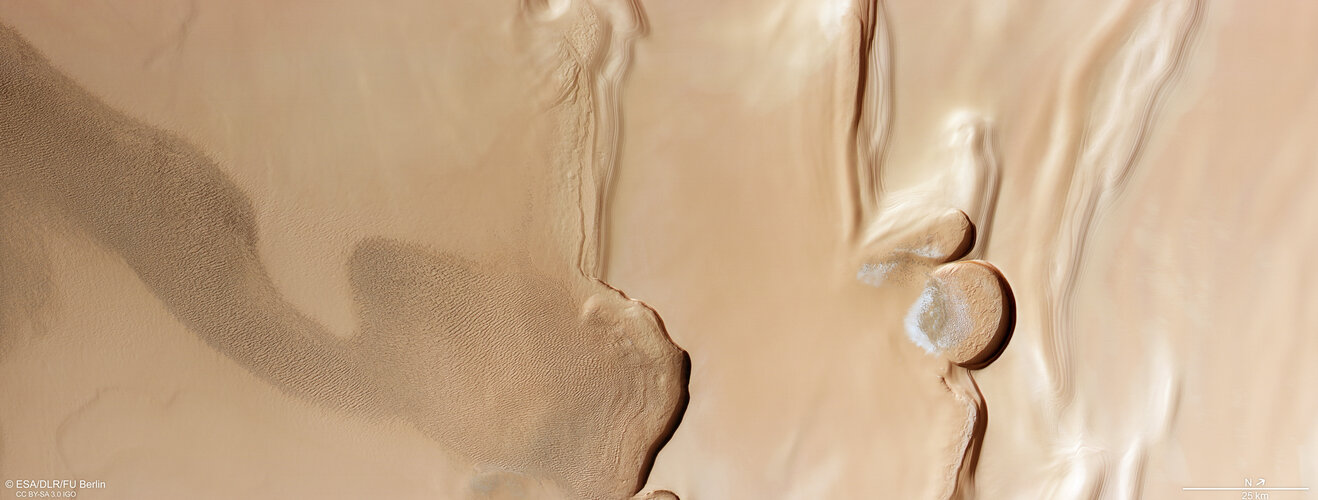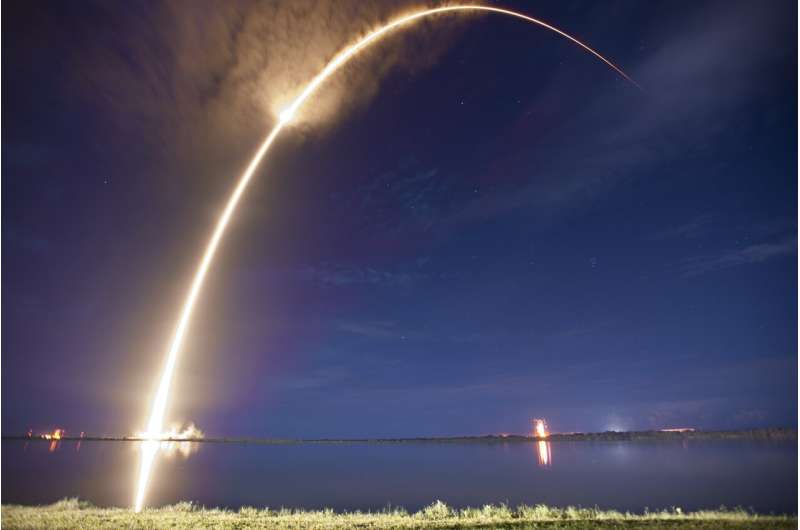Study finds the West is best to spot UFOs
Wednesday, 28 February 2024 12:24
In July of 2023, retired commander in the U.S. Navy David Fravor testified to the House Oversight Committee about a mysterious, Tic Tac-shaped object that he and three others observed over the Pacific Ocean in 2004. The congressional hearings riveted the world by bringing Unidentified Anomalous Phenomena (UAP) out of the "alien truther" realm and into the mainstream.
"This [Tic Tac-shaped object that] had just traveled 60 miles in…less than a minute, was far superior in performance to my brand-new F/A-18F and did not operate with any of the known aerodynamic principles that we expect for objects that fly in our atmosphere," claimed Fravor.
As sensor technology has advanced and personal aircraft use has skyrocketed, our ability to explain strange events has become harder to resolve. The U.S. Department of Defense has increasingly taken UAP, formerly known as Unidentified Flying Objects (UFOs), as a serious threat to national security.
Sand dunes meet stacked ice at Mars’s north pole
Wednesday, 28 February 2024 08:18
ESA’s Mars Express has captured an intriguing view near Mars’s north pole, imaging where vast sand dunes meet the many layers of dusty ice covering the planet’s pole.
FAA closes investigation into SpaceX Starship's double-explosion 2nd flight
Tuesday, 27 February 2024 21:02
As SpaceX continues to gear up for flight No. 3 of its massive Starship and Super Heavy from Texas, the Federal Aviation Administration has closed the investigation into the second flight that resulted in explosions of both the booster and upper stages back in November.
The FAA on Monday said the SpaceX-led investigation into what was classified as a "mishap," cited 17 action items that have to be addressed before any future launch licenses from SpaceX's Boca Chica, Texas launch site Starbase are approved.
Starship is SpaceX's replacement launch system for its Falcon 9 and Falcon Heavy rockets and is completely reusable. It's aiming to launch a third test flight as soon as next month if it can get approval.
The first launch of Starship and Super Heavy in April 2023 also ended in an explosion, but with the booster still connected to the upper stage. That launch also walloped the launch pad, and it took more than six months to close out that mishap investigation with 63 corrective actions.
The second flight performed much better despite the double combustive incidents mid-flight.
Under pressure - space exploration in our time
Tuesday, 27 February 2024 19:29 A new paradigm is taking shape in the space industry as the countries and entities accessing space continue to grow and diversify. This dynamic landscape creates both competition and potential for scientific collaboration, as well as the challenges and opportunities of progress.
In the past decade, humanity has seen the birth and expansion of a commercial space sector with new, private pla
A new paradigm is taking shape in the space industry as the countries and entities accessing space continue to grow and diversify. This dynamic landscape creates both competition and potential for scientific collaboration, as well as the challenges and opportunities of progress.
In the past decade, humanity has seen the birth and expansion of a commercial space sector with new, private pla Mining Into Mineral King: Sols 4110-4111
Tuesday, 27 February 2024 19:29 The planning team came in after the weekend to see another beautiful Martian drill hole on the target Mineral King! Mineral King is named after a silver mining district in Sequoia National Park, California. This was a pretty odd-looking rock, with the big overhanging ledges and several different colors, so we were all pretty anxious to see the drilling results. Fortunately, the rock was strong e
The planning team came in after the weekend to see another beautiful Martian drill hole on the target Mineral King! Mineral King is named after a silver mining district in Sequoia National Park, California. This was a pretty odd-looking rock, with the big overhanging ledges and several different colors, so we were all pretty anxious to see the drilling results. Fortunately, the rock was strong e GPS war: Israel's battle to keep drones flying and enemies baffled
Tuesday, 27 February 2024 19:29 Omer Sharar had just received the first delivery of his new GPS anti-jamming technology when Hamas militants attacked Israel on October 7.
Since then he and his team at InfiniDome, a start-up based in Caesarea, north of Tel Aviv, have been working around the clock to prevent the Israeli army's mini-drones from being intercepted by cheap and simple jamming in Gaza.
Israel - one of the wo
Omer Sharar had just received the first delivery of his new GPS anti-jamming technology when Hamas militants attacked Israel on October 7.
Since then he and his team at InfiniDome, a start-up based in Caesarea, north of Tel Aviv, have been working around the clock to prevent the Israeli army's mini-drones from being intercepted by cheap and simple jamming in Gaza.
Israel - one of the wo Chang'e 6 and new rockets highlight China's packed 2024 space agenda
Tuesday, 27 February 2024 19:29 China has announced plans to undertake around 100 space launch missions within the year, setting a new precedent for its national space industry's activity levels. This ambitious agenda, disclosed by the China Aerospace Science and Technology Corp (CASC), the leading state-owned space contractor, at a news conference in Beijing, underscores China's accelerating pace in the global space race.
China has announced plans to undertake around 100 space launch missions within the year, setting a new precedent for its national space industry's activity levels. This ambitious agenda, disclosed by the China Aerospace Science and Technology Corp (CASC), the leading state-owned space contractor, at a news conference in Beijing, underscores China's accelerating pace in the global space race. NASA's Planetary Radar Images Slowly Spinning Asteroid
Tuesday, 27 February 2024 19:29 On Feb. 2, a large asteroid safely drifted past Earth at a distance of about 1.8 million miles (2.9 million kilometers, or 7 0.5 times the distance between Earth and the Moon). There was no risk of the asteroid - called 2008 OS7 - impacting our planet, but scientists at NASA's Jet Propulsion Laboratory in Southern California used a powerful radio antenna to better determine the size, rotation,
On Feb. 2, a large asteroid safely drifted past Earth at a distance of about 1.8 million miles (2.9 million kilometers, or 7 0.5 times the distance between Earth and the Moon). There was no risk of the asteroid - called 2008 OS7 - impacting our planet, but scientists at NASA's Jet Propulsion Laboratory in Southern California used a powerful radio antenna to better determine the size, rotation, Japan's SLIM moon responds after outlasting 'lunar night'
Tuesday, 27 February 2024 19:29 Japan's Aerospace Exploration Agency said very early Monday they have regained communication with the Smart Lander for Investigating Moon exploration vehicle after nearly a month.
The Japanese space agency said on social media minutes after 12 a.m. local time that after sending a command to the machine, known as SLIM, a response had unexpectedly been received back.
"Confirming th
Japan's Aerospace Exploration Agency said very early Monday they have regained communication with the Smart Lander for Investigating Moon exploration vehicle after nearly a month.
The Japanese space agency said on social media minutes after 12 a.m. local time that after sending a command to the machine, known as SLIM, a response had unexpectedly been received back.
"Confirming th LeoLabs names Tony Frazier as CEO to expand its role in global space operations
Tuesday, 27 February 2024 19:29 In a strategic move poised to significantly impact the landscape of space situational awareness and safety, LeoLabs, a front-runner in monitoring space activity, has announced the appointment of Tony Frazier as its new Chief Executive Officer (CEO). With a storied career at the confluence of commercial space ventures and national security, Frazier's leadership is expected to catalyze LeoLabs' gr
In a strategic move poised to significantly impact the landscape of space situational awareness and safety, LeoLabs, a front-runner in monitoring space activity, has announced the appointment of Tony Frazier as its new Chief Executive Officer (CEO). With a storied career at the confluence of commercial space ventures and national security, Frazier's leadership is expected to catalyze LeoLabs' gr NASA Experiment Sheds Light on Highly Charged Moon Dust
Tuesday, 27 February 2024 19:29 Researchers are studying data from a recent suborbital flight test to better understand lunar regolith, or Moon dust, and its potentially damaging effects as NASA prepares to send astronauts back to the lunar surface under the Artemis campaign. The experiment, developed jointly by NASA and the University of Central Florida, sheds light on how these abrasive dust grains interact with astronauts,
Researchers are studying data from a recent suborbital flight test to better understand lunar regolith, or Moon dust, and its potentially damaging effects as NASA prepares to send astronauts back to the lunar surface under the Artemis campaign. The experiment, developed jointly by NASA and the University of Central Florida, sheds light on how these abrasive dust grains interact with astronauts, ATLAS Space helps make Space Force's Tactically Responsive Space mission a success
Tuesday, 27 February 2024 19:29 In a significant collaboration between private sector innovation and military space operations, ATLAS Space Operations, a frontrunner in Ground Software as a Service (GSaaS), has successfully supported the U.S. Space Force's VICTUS NOX program through a contract with Millennium Space Systems, a Boeing Company. This partnership underscores the pivotal role of rapid, adaptable ground support in ad
In a significant collaboration between private sector innovation and military space operations, ATLAS Space Operations, a frontrunner in Ground Software as a Service (GSaaS), has successfully supported the U.S. Space Force's VICTUS NOX program through a contract with Millennium Space Systems, a Boeing Company. This partnership underscores the pivotal role of rapid, adaptable ground support in ad Over 120 Grams of Asteroid Bennu Material Delivered by OSIRIS-REx Spacecraft
Tuesday, 27 February 2024 19:29 NASA's groundbreaking OSIRIS-REx mission has set a new benchmark in space exploration by delivering a staggering 4.29 ounces (121.6 grams) of asteroid material to Earth, marking the largest ever asteroid sample collection. The spacecraft's triumphant return on September 24, 2023, with samples from asteroid Bennu, not only surpassed the mission's initial goal of 60 grams but also highlighted the
NASA's groundbreaking OSIRIS-REx mission has set a new benchmark in space exploration by delivering a staggering 4.29 ounces (121.6 grams) of asteroid material to Earth, marking the largest ever asteroid sample collection. The spacecraft's triumphant return on September 24, 2023, with samples from asteroid Bennu, not only surpassed the mission's initial goal of 60 grams but also highlighted the 



